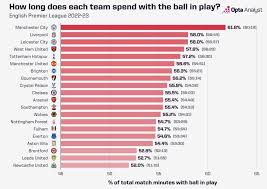The Importance of Opta Stats in Sports Analytics

Introduction to Opta Stats
In the rapidly evolving world of sports analytics, Opta Stats has emerged as a leading source of performance data. Used by teams, analysts, and fans alike, Opta Stats provides comprehensive statistics that enhance the understanding of athletic performance and game dynamics. This topic is particularly relevant as sports continue to incorporate technology for improved performance assessments and strategic planning.
The Role of Opta Stats in Sports
Opta Stats is widely recognised for its meticulous data collection techniques, covering various sports including football, rugby, cricket, and more. By analysing match events such as goals, assists, tackles, and player movements, Opta transforms raw data into meaningful insights. These insights are crucial for coaches and managers when devising game strategies, evaluating player performance, and scouting new talent.
Recent events highlight the growing importance of Opta Stats in decision-making. For instance, during the latest Premier League season, managers were observed referencing Opta data to refine their approaches towards both match tactics and player fitness. Further, sports broadcasters now frequently incorporate Opta Stats into live commentary, offering viewers a richer understanding of the game by citing statistics in real time.
Impact on Fan Engagement
Beyond professional use, Opta Stats has significantly impacted fan engagement. Fantasy sports leagues heavily utilise these statistics, enriching the experience for millions of players worldwide. Fans increasingly seek detailed analytics, driving platforms to offer Opta-driven insights on their apps and websites. This trend not only enhances fan enjoyment but also deepens their understanding of the sport.
Future of Opta Stats in Sports Analytics
As technology progresses, the future of Opta Stats seems promising. Innovations like AI and machine learning are set to allow for even deeper analysis and predictive modelling, which can reveal performance trends before they fully develop. This shift could broaden the application of data analytics not just in top leagues but also at youth levels, potentially reshaping scouting and training practices across all levels of sports.
Conclusion
In conclusion, Opta Stats has established itself as a cornerstone of modern sports analytics. Its ability to provide detailed insights into players’ performance and game dynamics makes it invaluable for teams, analysts, and fans alike. With advancing technologies likely to enhance data collection and analysis further, the significance of Opta Stats in the sports world is only set to grow. As this evolution continues, stakeholders at all levels will need to embrace these insights to remain competitive and engaged with the ever-changing landscape of sports.









